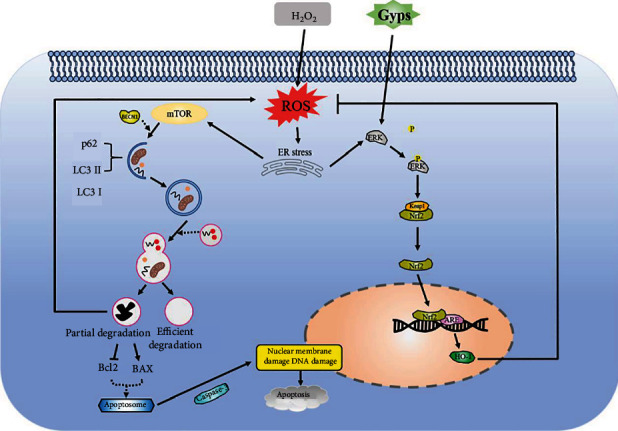Figure 15.

Schematic diagram of changes in orbital fibroblasts under the intervention of oxidative stress and gypenosides. Under the condition of oxidative stress, the increase of endogenous ROS leads to the occurrence of endoplasmic reticulum stress. On the one hand, endoplasmic reticulum stress induces the occurrence of autophagy. If the oxidative stress damage is serious, autophagy cannot fully digest the damaged organelles. It will lead to increased ROS production and promote the start of apoptosis-related processes leading to apoptosis. On the other hand, endoplasmic reticulum stress can promote ERK phosphorylation, allowing Nrf2 to interact with its inhibitor under oxidative stress, causing Nrf2 to accumulate in the cytoplasm, and Nrf2 translocated to the nucleus and combined with antioxidant response elements. Gypenosides as an antioxidant can enhance the role of endogenous Nrf2 pathway activator. Under oxidative stress, gypenosides can promote ERK phosphorylation and accelerate the dissociation of Nrf2 from Keap1, resulting in more Nrf2 translocation to the nucleus. NRF2 binds through antioxidant response elements and regulates the expression of its downstream target gene (HO-1), to prevent oxidative stress and damage.
